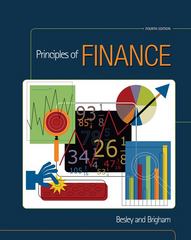Question
CASE N 3 Halwan Tool, a large machine shop, is considering replacing one of its lathes with either of two new latheslathe A or lathe
CASE N 3
Halwan Tool, a large machine shop, is considering replacing one of its lathes with either of two new latheslathe A or lathe B. Lathe A is a highly automated, computer-controlled lathe; lathe B is a less expensive lathe that uses standard technology. To analyze these alternatives, Zahir Badran, a financial analyst, prepared estimates of the initial investment and incremental (relevant) cash inflows associated with each lathe. These are shown in the following table.
Lathe 1 Lathe 2
Initial investment CF0 US$660,000 US$360,000
Year Cash inflows (CFt)
1 US$128,000 US$ 88,000
2 182 000 120 000
3 166 000 96 000
4 168 000 86 000
5 450 000 207 000
Note that Zahir plans to analyze both lathes over a 5-year period. At the end of that time, the lathes would be sold, thus accounting for the large fifth-year cash inflows.Zahir believes that the two lathes are equally risky and that the acceptance of either of them will not change the firms overall risk. He therefore decides to apply the firms 13 percent cost of capital when analyzing the lathes. Halwan Too requires all projects to have a maximum payback period of 4.0 years.
TO DO
a. Use the payback period to assess the acceptability and relative ranking of each lathe.
b. Assuming equal risk, use the following sophisticated capital budgeting techniques to assess the acceptability and relative ranking of each lathe:
(1) Net present value (NPV).
(2) Internal rate of return (IRR).
c. Summarize the preferences indicated by the techniques used in parts a and b. Do the projects have conflicting rankings?
d. Draw the net present value profiles for both projects on the same set of axes, and discuss any conflict in rankings that may exist between NPV and IRR. Explain any observed conflict in terms of the relative differences in the magnitude and timing of each projects cash flows.
e. Use your findings in parts a through d to indicate, on both (1) a theoretical basis and (2) a practical basis, which lathe would be preferred. Explain any difference in recommendations.
Step by Step Solution
There are 3 Steps involved in it
Step: 1

Get Instant Access to Expert-Tailored Solutions
See step-by-step solutions with expert insights and AI powered tools for academic success
Step: 2

Step: 3

Ace Your Homework with AI
Get the answers you need in no time with our AI-driven, step-by-step assistance
Get Started


